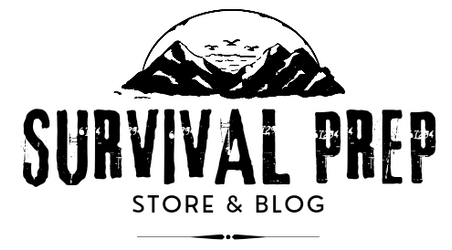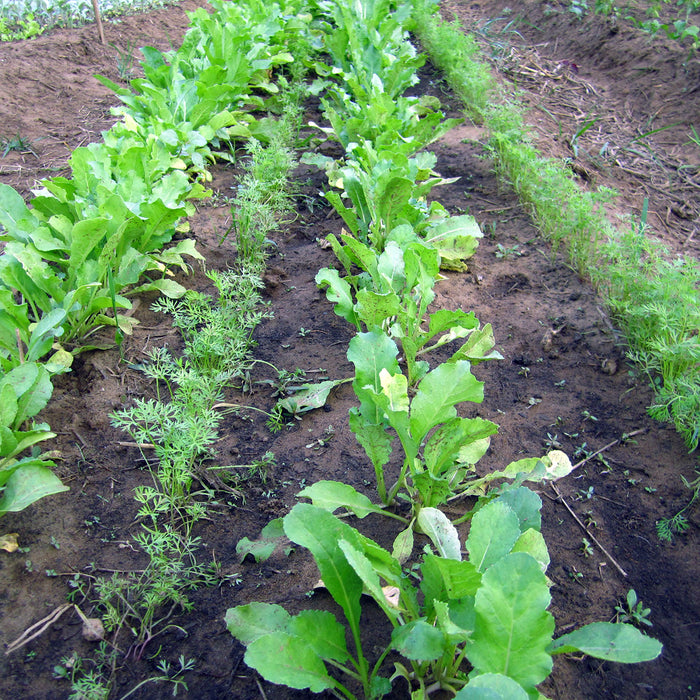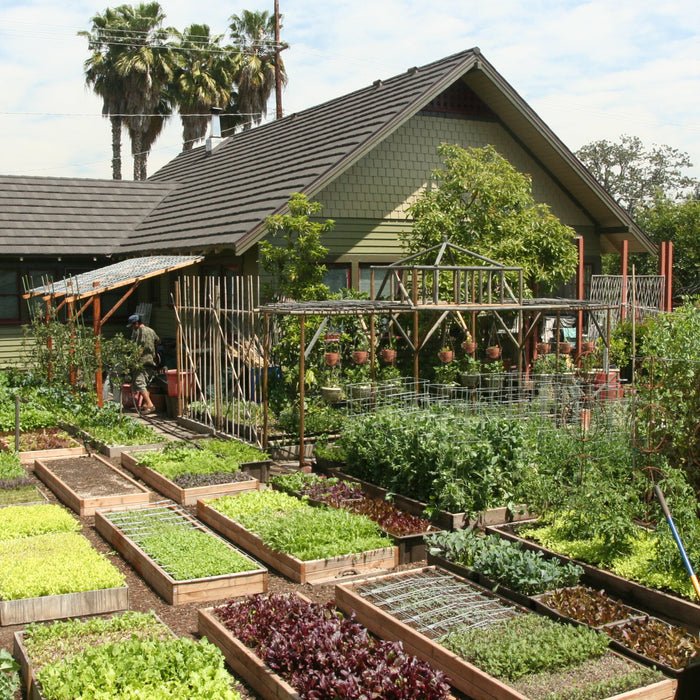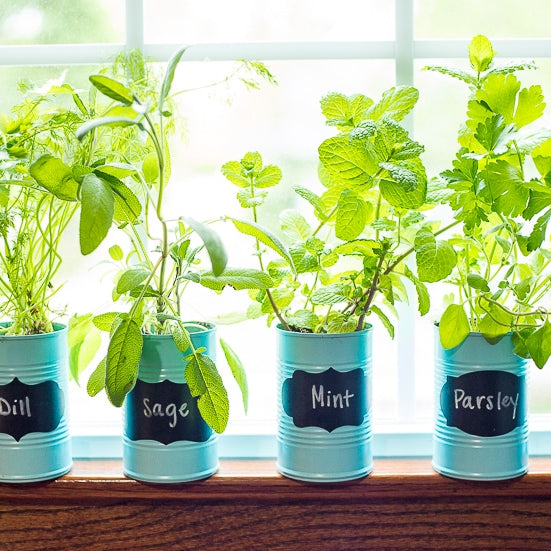

The Doomsday Preppers Ultimate Guide: From Maps to Gas Masks
In recent years, the idea of a doomsday scenario has become increasingly prevalent in the minds of many people. With the rise of natural disasters and political instability, it's no wonder that some individuals are preparing for the worst. These individuals, known as doomsday preppers, often spend significant amounts of time and money preparing for a catastrophic event that they believe is inevitable. One crucial component of their preparation is the doomsday map, a tool that helps them plan for various scenarios and their potential impact.
In this article, we'll take a deep dive into the world of doomsday preppers and explore the concept of a doomsday map. We'll examine the reasons why people become preppers, what types of events they're preparing for, and how a doomsday map can be a valuable tool in their preparation. We'll also look at some of the most common myths surrounding doomsday preppers and explore the reality of their lifestyle.
What are Doomsday Preppers?
Doomsday preppers are individuals who believe that a catastrophic event that could potentially lead to the end of the world is imminent. These individuals take steps to prepare for this event, often by stockpiling food, water, and other supplies, as well as learning survival skills such as hunting, fishing, and self-defense.
The reasons why people become doomsday preppers are varied. Some individuals believe that a natural disaster such as a hurricane or earthquake could cause widespread devastation, while others fear that a man-made disaster such as a nuclear war could be on the horizon. Some preppers are also concerned about the collapse of society due to economic instability or political unrest.
Doomsday Preppers and their Worldview
According to an article by Psychology Today, the doomsday prepper lifestyle is often based on a worldview that sees the world as a dangerous place and anticipates a catastrophic event. This belief system can have both positive and negative effects on preppers.
On the one hand, preppers may feel a sense of security and control from their preparation, as it gives them a feeling of protecting their loved ones. This can alleviate anxiety and provide a sense of purpose.
On the other hand, the doomsday prepper mindset can also lead to isolation and mistrust of those outside their community. Preppers may feel they need to keep their preparations secret, further exacerbating feelings of paranoia and disconnection from friends and family.
There are several positive aspects to the doomsday prepper lifestyle. One of the most significant benefits is that preppers are often well-prepared for emergencies and disasters, which can help keep themselves and their families safe in times of crisis. Preppers often have stockpiles of food, water, and other essential supplies, as well as first aid kits and other medical supplies.
According to an article in The Washington Post, preppers can also be a valuable resource for their communities in times of crisis. Preppers who are willing to share their resources and knowledge with others can help their communities prepare for and respond to disasters, such as hurricanes, floods, and earthquakes. In some cases, preppers have even organized disaster response teams or established community shelters to provide aid and support during emergencies.
Furthermore, prepping can be a hobby that provides a sense of purpose and fulfillment for individuals who enjoy self-sufficiency and being prepared for the worst. Prepping can also be a way for people to connect with others who share their interests and concerns, building a sense of community and camaraderie.
Overall, while the doomsday prepper lifestyle can have its challenges, there are positive aspects to it as well, including being prepared for emergencies, providing support to communities, and finding a sense of fulfillment through self-sufficiency.
What Percentage of Americans are preppers?
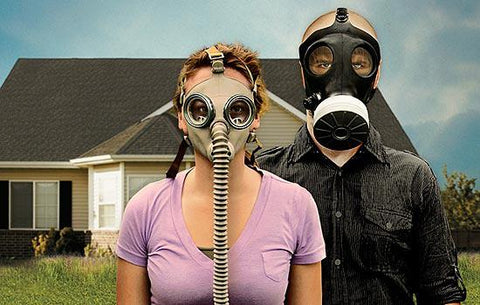
Prepping has become an increasingly popular practice in recent years as Americans look for ways to prepare for potential disasters. But just how many Americans are preppers?
According to a survey conducted by the National Geographic Channel in 2012, approximately 28% of Americans consider themselves to be preppers. That's nearly one-third of the population!
However, it's important to note that not all preppers are the same. The term "prepper" can refer to a wide range of individuals who are preparing for different scenarios. Some preppers are focused on natural disasters, while others are preparing for economic collapse, pandemics, or even the end of the world.
In the same survey, it was found that among those who consider themselves to be preppers, the most common reason for prepping was the fear of economic collapse (41%), followed by the fear of a natural disaster (28%). Other reasons cited for prepping included concerns about terrorism (17%) and the belief in a coming doomsday scenario (9%).
Despite the popularity of prepping, there are still many misconceptions about what it means to be a prepper.
Some people think of preppers as paranoid conspiracy theorists hoarding supplies in a bunker, but in reality, most preppers are just regular people who want to be prepared for potential disasters.
In fact, being prepared for emergencies is something that everyone should consider. The Federal Emergency Management Agency (FEMA) recommends that everyone have at least a three-day supply of food and water, as well as other basic supplies like first aid kits, flashlights, and batteries.
How Much Does it Cost to be a Doomsday Prepper?
Being a doomsday prepper requires a lot of preparation, planning, and investment. While there's no one-size-fits-all answer to the question of how much it costs to be a doomsday prepper, there are several common expenses that preppers should be prepared for.
First, it's important to understand that the cost of prepping can vary widely depending on factors such as location, the type of disaster being prepared for, and the level of preparedness desired. For example, prepping for a natural disaster like a hurricane or earthquake may require different supplies and preparations than prepping for an economic collapse or pandemic.
One of the most significant expenses associated with prepping is food and water storage. FEMA recommends that every household have at least a three-day supply of food and water, but many preppers aim for much more than that. Some preppers stockpile enough food and water to last for months or even years, which can be a significant investment.
Another common expense associated with prepping is the cost of supplies like first aid kits, flashlights, and batteries. These items can add up quickly, especially if high-quality, durable supplies are desired. For example, a high-quality first aid kit can cost several hundred dollars, while a high-quality flashlight can cost upwards of $100.
Preppers may also invest in equipment like generators, solar panels, and water filtration systems to prepare for a potential disaster. These types of investments can be significant, with costs ranging from several hundred dollars to several thousand dollars depending on the type and quality of equipment.
In addition to physical supplies and equipment, preppers may also invest in education and training to prepare for potential disasters. This may include attending survival training courses or learning essential skills like first aid, navigation, and self-defense. These types of courses can range in cost from a few hundred dollars to several thousand dollars depending on the level of training desired.
Preparing for disasters can be cheap or expensive depending on the factors of where you live and how you live. It's a common misconception that prepping is cheap and easy and everyone should do it. The truth is that it depends on many factors, including location, resources, and habits. For instance, if you live on a southern US farm and have solar and a well that solar can run, and are already accustomed to canning food, you probably can prep for the cost of extra flashlight batteries and a few dollars for topping off your propane tank.
However, if you live in a forested northern suburb, solar isn't an option, you have to think about not freezing in the winter when the power goes out, and you have to buy food to store because your little shaded plot of land won't support a farm. The costs for prepping will then add up, and it's essential to plan accordingly.
To provide an idea of costs, here's an approximation of what one person spent preparing for a disaster in a northern suburb of New England.
These costs will vary depending on your location, lifestyle, and other factors.
Cooking food requires a gas-powered generator, which costs around $850. Storing 40 gallons of gas (which isn't advisable) requires $400 in metal gas cans and Stabil alone, let alone the gas. The generator can also run on propane, which requires a bunch of propane tanks, hoses, and the propane itself, totaling around $850.
Heat, when the power runs out, needs 2 30,000 BTU heaters costing around $500. Buying two cords of wood cost $600 because the plan was to install a second fireplace inset wood stove, which eventually was abandoned. Instead, a black pipe heat exchanger was built for the fireplace, which costs less than $850.
Solar requires solar panels, batteries, an MPPT charger, and 120v chargers, which added up to over $1000. The backyard's excessive tree cover, however, makes it impossible to get any sunlight, requiring the removal of 6 large oak trees. Taking them down can cost $6000 if hired out or expensive bills if done alone.
A portable 12v freezer was purchased for $250, hoping to run it on whatever solar energy was available. Water storage includes a couple of bladders for the bathtubs, a 275-gallon IBC tank, and a bottle of chemicals to treat the water, which costs around $400.
For food, prepackaged food from a well-known supplier built up a few weeks of supply, costing a lot there. In contrast, bulk textured soy protein, rice, beans, oatmeal, canned chili, processed canned meat, powdered egg, freeze-dried vegetables and fruits, and small amounts of nutritional yeast were also stocked. Six months for two people cost approximately $2000.
Random tools and supplies include alcohol for alcohol stoves, LED lighting, plasma lighters, butane lighters, kerosene for the lantern, white gas, food buckets, oxygen absorbers, backpacks, paracord, an ax, a survival knife, decent walking shoes, iodine, metal trash cans, and a first aid kit, costing around $1050.
Getting two old bicycles on the road with panniers, repairs, and spare parts costs $350, and some 2.5-gallon water jugs for short-term storage and transport cost $250.
The total cost for prepping for two people for six months in a northern New England suburb was approximately $13,350.
It's important to note that these costs will vary and that prepping can be done cheaper if done smartly. This breakdown aims to provide an idea of what to expect when preparing for a disaster.
____
Read:
Self Defense Skills & Training You Should Be Taking Right Now.
____
Overall, the cost of being a doomsday prepper can be significant, with some preppers investing thousands of dollars in supplies, equipment, and training. However, it's important to remember that prepping doesn't have to be an all-or-nothing endeavor. Even small steps like stocking up on extra food and water or investing in a basic first aid kit can help prepare for potential disasters without breaking the bank.
To save money on prepping, preppers can also look for deals on supplies and equipment, purchase items in bulk, and consider alternative, lower-cost options like DIY solutions. By taking a strategic and cost-conscious approach to prepping, it's possible to prepare for potential disasters without breaking the bank.
In conclusion, the cost of being a doomsday prepper can vary widely depending on factors like location, the type of disaster being prepared for, and the level of preparedness desired. However, common expenses include food and water storage, supplies like first aid kits and flashlights, equipment like generators and solar panels, and education and training. While prepping can be a significant investment, even small steps can help prepare for potential disasters without breaking the bank.
How Much Does A Doomsday Preppers Bunker Cost?
Depending on the level of amenities, a minimal bunker can cost at least $38,000, while a reinforced concrete bunker, averaging around 2,500 square feet with a kitchen and other amenities, can cost up to $60,000. Shipping the bunker can add up to $10,000, and excavation and installation costs can range from $20,000 to $25,000 since bunkers must be buried at least six feet underground.
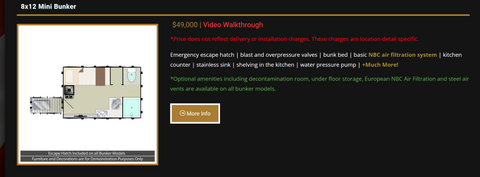
Alternatively, preppers can consider abandoned missile silos, such as a 210-acre Titan 1 missile site outside of Denver, Colorado, which costs $2.8 million. Luxurious doomsday condos situated in abandoned missile silos in Kansas, which come with a pool, movie theater, and indoor farm, cost about $7 million.
You can buy abandoned missile silos!
However, the market for doomsday shelters and prepper life is relatively new and built on fear, which is not a sustainable basis for any industry. Thus, it's uncertain how these shelters will appreciate in the future, especially since the predicted Mayan apocalypse did not occur. The right buyer would have to be interested, and if the market continues to grow, more may become interested.
Common Myths About Doomsday Preppers
There are many myths surrounding doomsday preppers that can be debunked with a little bit of research. One of the most common myths is that preppers are all paranoid conspiracy theorists who believe in outlandish theories. While there may be some individuals who fit this description, the vast majority of preppers are just regular people who are concerned about the future.
Another common myth is that preppers are selfish and only concerned with their own survival. While it's true that preppers do prioritize their own survival, many of them also believe in helping others in their community. They often work to build networks of like-minded individuals who can support each other in the event of a disaster.
Finally, some people believe that preppers are all preparing for the same doomsday scenario. While there are some common events that preppers prepare for, such as natural disasters and economic collapse, every prepper has their own unique set of concerns and preparations.
What are Preppers Preparing For?

As mentioned earlier, there are many different types of disasters that preppers prepare for. These can include natural disasters such as hurricanes, earthquakes, tornadoes, and wildfires, as well as man-made disasters like nuclear war, economic collapse, and pandemics. Each type of disaster presents unique challenges and requires different preparations.
For example, preparing for a natural disaster such as a hurricane might involve stockpiling non-perishable food, water, and medical supplies. It might also involve boarding up windows, securing outdoor furniture, and having an evacuation plan in place. On the other hand, preparing for a pandemic might involve stockpiling medical supplies like masks and gloves, and creating a quarantine plan for yourself and your family.
View: Worst Natural Disasters by State
Doomsday Maps and How They Can Help Preppers
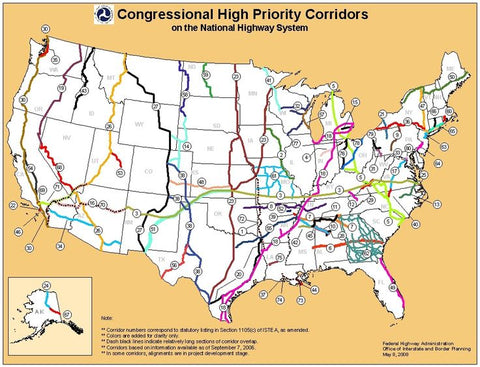
One tool that many doomsday preppers use to plan for disasters is the doomsday map. A doomsday map is a map that outlines the potential impact of various disasters in different areas. It can help preppers plan for events such as natural disasters, economic collapse, or even the outbreak of a pandemic.
A doomsday map can help preppers answer questions like: What areas are most vulnerable to natural disasters? Where are the safest places to live in the event of a disaster? What resources will be available in different areas, and how can they be accessed?
By using a doomsday map, preppers can make informed decisions about where to live, what resources to stockpile, and how to prepare for various disasters. For example, a prepper living in an area that's prone to earthquakes might use a doomsday map to identify the safest places to live and the best ways to secure their home against earthquake damage.
Doomsday Preppers Supplies List
Looking for a comprehensive list of doomsday prepper supplies? Look no further than this list of 200 essential items for any prepper. From food and water to shelter and self-defense, this list covers everything you need to survive in a doomsday scenario. Whether you're a seasoned prepper or just starting out, this list is sure to help you prepare for any disaster that comes your way.
- Water filter
- Emergency radio
- Solar charger
- First aid kit
- Portable toilet
- Hand sanitizer
- Duct tape
- Tarp
- Paracord
- Fire starter
- Blankets
- Emergency whistle
- Multi-tool
- Work gloves
- Fishing gear
- Hunting rifle
- Ammunition
- Bow and arrow
- Binoculars
- Night vision goggles
- Gas mask
- Hazmat suit
- Respirator
- Protective eyewear
- Body armor
- Portable generator
- Propane stove
- Fuel canisters
- Water storage containers
- Canned food
- Dehydrated meals
- MREs
- Jerky
- Trail mix
- Energy bars
- Cooking utensils
- Pot and pans
- Eating utensils
- Cups and plates
- Cooler
- Ice packs
- Water purification tablets
- Water bottles
- Hand-crank flashlight
- Headlamp
- Lantern
- Glow sticks
- Batteries
- Battery charger
- Solar panels
- Inverter
- Whole House EMP Surge protector
- Emergency blanket
- Poncho
- Boots
- Socks
- Long underwear
- Rain jacket
- Sun hat
- Insect repellent
- Sunscreen
- Signal mirror
- Compass
- Maps
- GPS
- Satellite phone
- Walkie-talkies
- Ham radio
- Antenna
- Candles
- Matches
- Lighter
- Fire extinguisher
- Ax
- Shovel
- Saw
- Crowbar
- Pry bar
- Bolt cutters
- Wire cutters
- Hand drill
- Screws and nails
- Dolly
- Hand truck
- Rope
- Bungee cords
- Ratchet straps
- Carabiners
- Folding chairs
- Table
- Camp stove
- Fuel
- Firewood
- Water pump
- Bucket
- Tongs
- Whisk
- Can opener
- Bottle opener
- Wine opener
- Cutting board
- Kitchen knife set
- Spatula
- Ladle
- Mixing bowls
- Measuring cups
- Measuring spoons
- Rolling pin
- Cookie sheet
- Baking dish
- Dutch oven
- Stock pot
- Frying pan
- Skewers
- Thermometer
- Food processor
- Blender
- Hand mixer
- Toaster
- Coffee maker
- Tea kettle
- Griddle
- Waffle maker
- Pizza stone
- Cast iron skillet
- Mortar and pestle
- Slow cooker
- Pressure cooker
- Bread maker
- Cheese grater
- Juicer
- Knives
- Zip Lock Bags
- Food dehydrator
- Vacuum sealer
- Canisters
- Plastic bags
- Aluminum
- Head Mounted Night vision goggles
- Weather radio
- Satellite phone
- Handheld GPS
- Wind-up flashlight
- Headlamp
- Binoculars
- Tactical gloves
- Emergency whistle
- Paracord bracelet
- Waterproof matches
- Portable water filtration system
- Water storage containers
- Collapsible water container
- Water purification tablets
- Hydration bladder
- Portable shower
- Camp toilet
- Solar shower bag
- Quick-dry towel
- Insect repellent
- Mosquito netting
- First aid kit
- Prescription medications
- Personal hygiene items
- Feminine hygiene products
- Antibacterial hand sanitizer
- Hand-cranked radio
- Wind-up alarm clock
- Portable power bank
- Solar battery charger
- Extra batteries
- Portable solar panel
- Solar-powered generator
- Backup generator
- Gasoline storage cans
- Mr. Heater Portable Buddy
- Portable propane stove
- Propane heater
- Camp stove fuel
- Charcoal
- Firestarter
- Folding camping chairs
- Folding camping table
- Portable hammock
- Camping cot
- Sleeping bag
- Sleeping pad
- Tent
- Tarp
- Survival manual
- Maps
- Compass
- Flares
- Bear spray
- Personal defense weapon
- Gun cleaning kit
- Ammunition
- Bulletproof vest
- Gas mask
- Radiation detector
- Geiger counter.
Read:
Why Everyone Should be Storing Potasssium Iodide Tablets
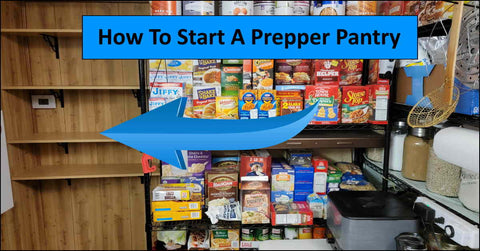
What is the Best Way to Organize Prepper Supplies?
Storing and Organizing Prepper Supplies
When it comes to prepping, one of the most important aspects is storing and organizing your supplies. Having a well-organized storage system will not only make it easier for you to access your supplies in an emergency but also help you keep track of what you have and what you need to restock. In this chapter, we will discuss how to store and organize your prepper supplies effectively.
- Choose the Right Storage Location
The first step to organizing your prepper supplies is to find the right storage location. Ideally, you want a location that is cool, dry, and free from direct sunlight. This could be a closet, a basement, a spare room, or a garage. It's essential to ensure that the storage location is easily accessible, and there is enough space to store all your supplies.
- Categorize Your Supplies
Next, you'll want to categorize your supplies. This will help you keep track of what you have and what you need to restock. Here are some categories you can consider:
- Food and Water: This includes non-perishable food items, bottled water, and water purification tablets.
- Medical Supplies: This includes first aid kits, prescription medications, and over-the-counter medications.
- Shelter and Warmth: This includes tents, sleeping bags, blankets, and portable heaters.
- Tools and Equipment: This includes multi-purpose tools, flashlights, batteries, and fire starters.
- Personal Hygiene: This includes toiletries, soap, and sanitizers.
- Use Containers and Labels
Once you've categorized your supplies, you'll want to use containers and labels to keep everything organized. Here are some tips to help you with this:
- Use clear plastic containers to store your supplies. This will make it easy for you to see what's inside.
- Label each container with the category of supplies it contains. You can also add a list of the items inside for quick reference.
- Use a color-coding system to identify each category. For example, use green for food and water, red for medical supplies, blue for shelter and warmth, yellow for tools and equipment, and purple for personal hygiene.
- Rotate Your Supplies
It's important to rotate your supplies regularly to ensure they remain fresh and usable. Here are some tips to help you with this:
- Check the expiration dates on all your supplies regularly and replace any items that are expired.
- Use the first in, first out (FIFO) system when storing food items. This means that you use the oldest items first and replace them with newer items.
- Rotate your water supply every six months to ensure it remains fresh.
- Consider the Space
It's essential to make the most of the space you have available when storing your prepper supplies. Here are some tips to help you with this:
- Use shelves and storage racks to maximize vertical space.
- Use under-bed storage containers to store supplies that are not frequently used.
- Use wall-mounted storage solutions to keep your supplies off the ground and free up floor space.
- Keep an Inventory
Finally, it's essential to keep an inventory of your prepper supplies. This will help you keep track of what you have, what you need to restock, and when you need to rotate your supplies. Here are some tips to help you with this:
- Use a spreadsheet or an inventory app to keep track of your supplies.
- Update your inventory regularly and make a note of when you need to restock or rotate your supplies.
- Keep a printed copy of your inventory in your prepper binder, along with other important documents.
- Secure Your Supplies
It's important to make sure that your prepper supplies are secured and protected from potential threats. Here are some tips to help you with this:
- Use sturdy containers that can withstand damage and tampering.
- Lock your storage area and make sure that only trusted individuals have access to it.
- Consider adding security cameras or alarms to your storage area to deter theft and break-ins.
- Customize Your Storage System
Every prepper's needs and supplies are unique, so it's essential to customize your storage system to fit your needs. Here are some tips to help you with this:
- Consider the size and weight of your supplies when choosing containers and shelves.
- Think about the layout of your storage area and how you can best maximize the space.
- Don't be afraid to experiment and make changes to your storage system as needed.
- Plan for Mobility
In the event of an emergency, you may need to evacuate your home quickly. It's important to have a plan in place for how you will transport your prepper supplies. Here are some tips to help you with this:
- Use backpacks, duffel bags, or storage totes that are easy to carry and transport.
- Keep a "grab-and-go" bag ready with essential supplies that you can easily take with you in an emergency.
- Consider using a wheeled cart or hand truck to move larger or heavier supplies.
- Maintain Your Supplies
Finally, it's important to regularly maintain your prepper supplies to ensure that they remain usable and effective. Here are some tips to help you with this:
- Check your supplies regularly for damage, leaks, or signs of wear and tear.
- Clean and sanitize your supplies as needed to prevent contamination.
- Store your supplies in their original packaging or in airtight containers to prevent exposure to air and moisture.
In conclusion, storing and organizing your prepper supplies is an essential part of emergency preparedness. By following these tips, you can create a well-organized and efficient storage system that will help you access your supplies quickly and easily when you need them most. Remember to regularly rotate and maintain your supplies to ensure that they remain fresh and usable, and to customize your storage system to fit your unique needs and situation.
Blog Tags: prepper, emergency preparedness, storage, organization, supplies, survival, security,
doomsday preppers, emergency preparedness, survival, maps, evacuation routes, safe zones, supply cache, natural disasters, social unrest, economic collapse, self-reliance, disaster scenarios, food sources, water sources, threat assessment.
Recommended Posts
- How to Build a Bug Out Bag for Kids: Tips and Tricks
- 10 Survival Skills Every Kid Should Know
- Food prices are about to skyrocket even more; Prepare for a 'famine,' followed by housing crash, then equities wipeout - Michael Gayed
- South Threatened by Severe Weather After Texas Tornado Disaster: How to Prepare.
- The Ultimate Guide to Radiation Water Filters: How They Work
